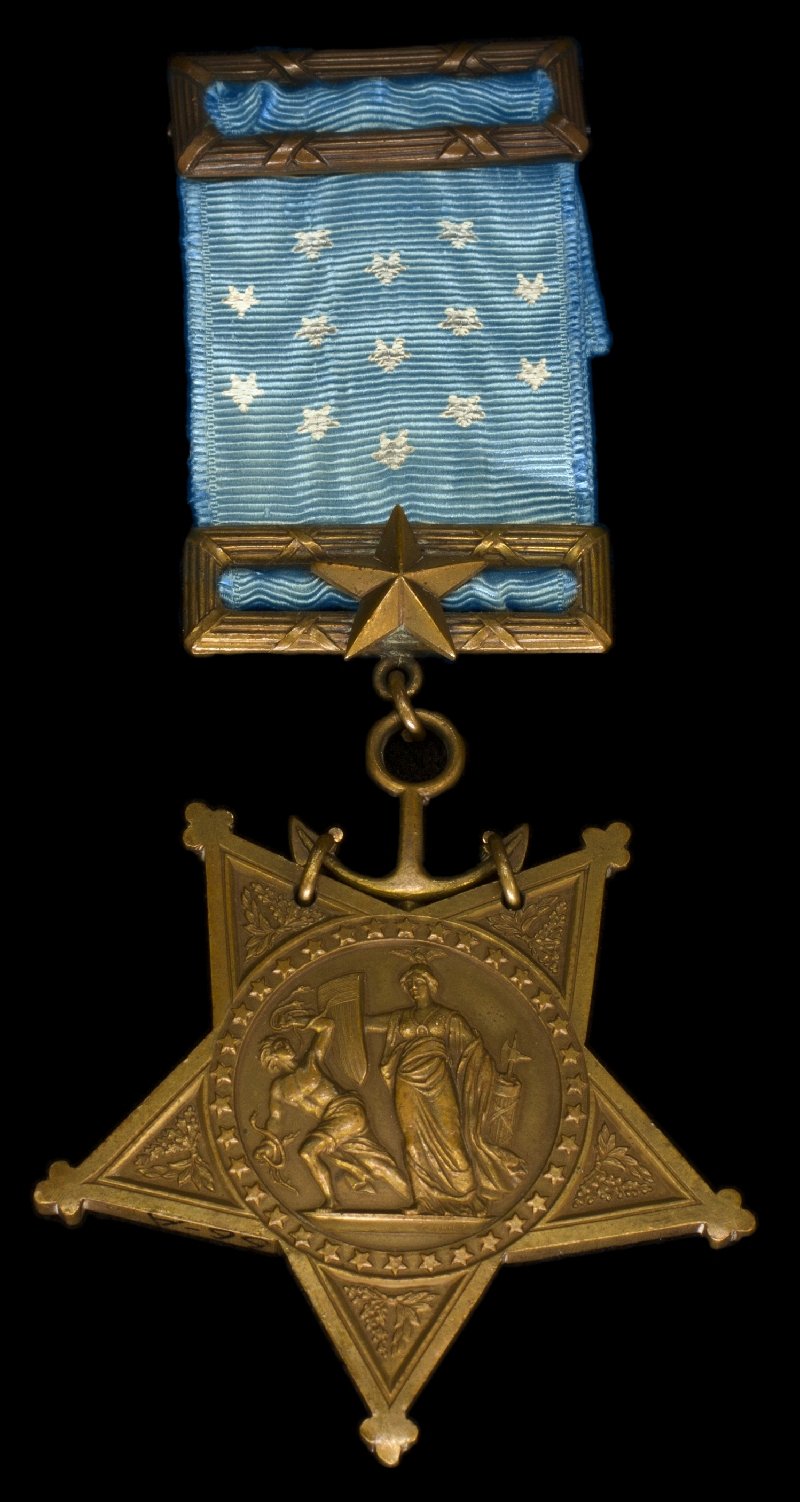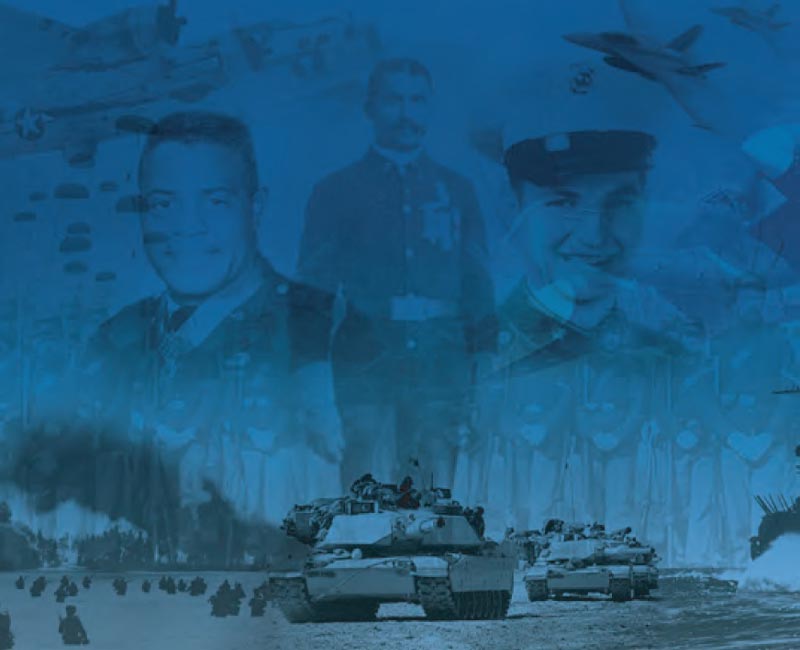
Army Medal of Honor
Presently, there are three variations of the Medal of Honor. Steeped with symbolism, the Medal has become a historic symbol of our nation’s bravest. Out of respect for those who have earned it, its appearance has remained largely unaltered in over 150 years.
United States of America
The words “United States of America” surround the central engraving.
Eagle
The eagle perched at the top of the medal is a traditional symbol of the United States.
Minerva
A simple profile of Minerva, the Helmeted Goddess of Wisdom and War, rests in the center of the medal.
Oak Clusters
Dark green oak clusters located in each of the star’s five points represent strength.
Laurel Wreath
The wreath of laurel leaves, a symbol of victory, was added in 1904.
Ribbon
A light blue ribbon, a color of valor, is embroidered with 13 stars for the 13 original colonies.
Air Force Medal of Honor
Presently, there are three variations of the Medal of Honor. Steeped with symbolism, the Medal has become a historic symbol of our nation’s bravest. Out of respect for those who have earned it, its appearance has remained largely unaltered in over 150 years.
34 Stars
The 34 stars encircling the insignia are equal to the number of stars on the U.S. Flag in 1862. Each star represents a state, from both Union and Confederate states.
Coat of Arms
The lightning bolts at the top of the Medal are borrowed from the Air Force Coat of Arms.
Lady Liberty
The Statue of Liberty is centered in the Air Force design. In addition to standing for Liberty, she also stands for beauty, strength and wisdom.
Oak Clusters
Dark green oak clusters located in each of the star’s five points represent strength.
Laurel Wreath
The wreath of laurel leaves, a symbol of victory, was carried over from the Army’s Medal of Honor design.
Ribbon
A light blue ribbon, a color of valor, is embroidered with 13 stars for the 13 original colonies.
Navy, Marine Corps & Coast Guard Medal of Honor
Presently, there are three variations of the Medal of Honor. Steeped with symbolism, the Medal has become a historic symbol of our nation’s bravest. Out of respect for those who have earned it, its appearance has remained largely unaltered in over 150 years.
Laurel & Oak Leaves
Clusters of laurel and oak leaves located on each of the star’s five points represent victory and strength.
34 Stars
The 34 stars encircling the insignia are equal to the number of stars on the U.S. Flag in 1862. Each star represents a state, from both Union and Confederate states.
Minerva
The Roman Goddess of Wisdom and War, Minerva is depicted warding off a man clutching snakes in his hand, meant to represent discord. The shield in Minerva’s right hand is representative of the Union of our States, while the bundle of rods and axe blade in her left is symbolic of authority. The owl perched on her helmet is a symbol of wisdom.
Ribbon
A light blue ribbon, a color of valor, is embroidered with 13 stars for the 13 original colonies.
Designs of the Medal of Honor
Since its creation during the American Civil War, the Medal of Honor has undergone several design changes. The U.S. Army and U.S. Navy have always had separate designs for their personnel. Until the U.S. Air Force introduced its design in 1965, all airmen received the Army design. The U.S. Marine Corps and U.S. Coast Guard receive the U.S. Navy design.
In 1919, the Navy experimented with a second Navy design, known as the “Tiffany Cross,” to be bestowed on Naval personnel whose actions took place during armed conflict. Individuals whose actions did not take place during combat received the original star design. This two-design system created confusion and the Tiffany Cross design was not widely issued.
Below are images illustrating the evolution of Medal of Honor designs from the beginning. The original designs were worn on the lapel of a recipient. Today the Medal of Honor is the only U.S. Military medal that hangs around the neck.














